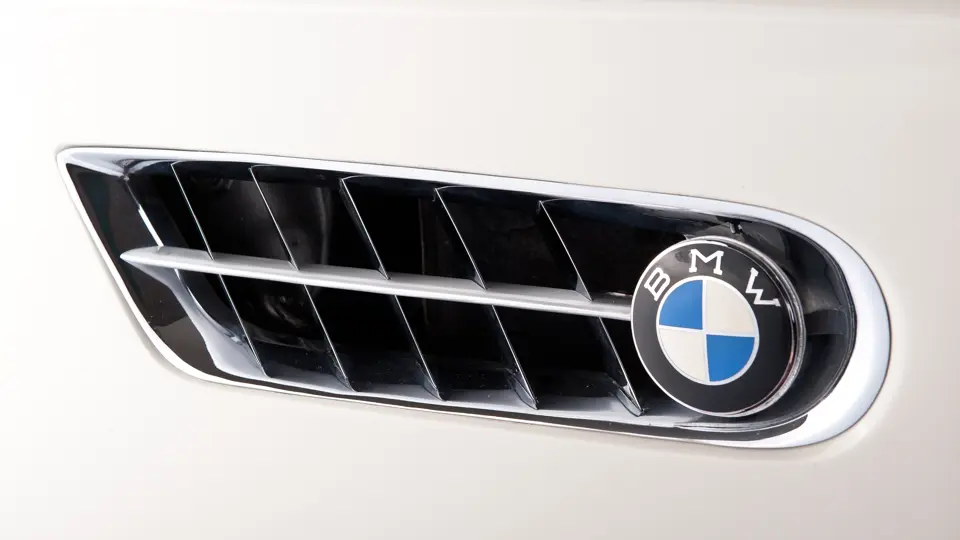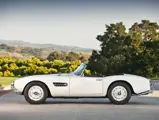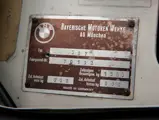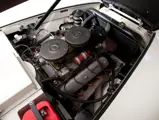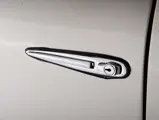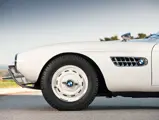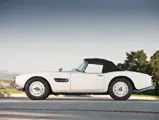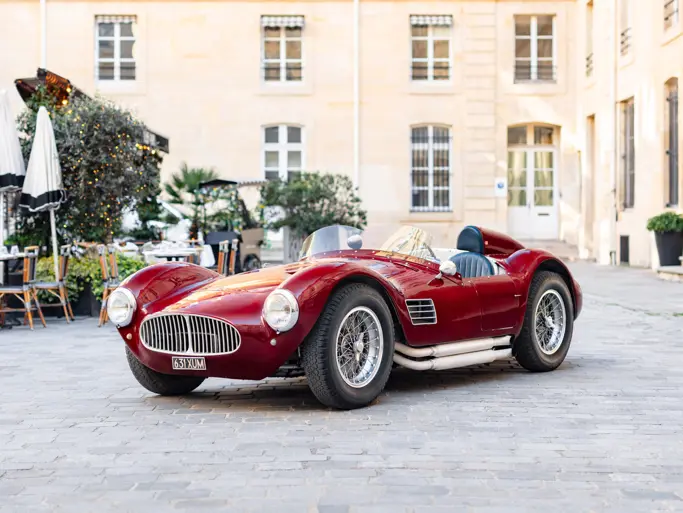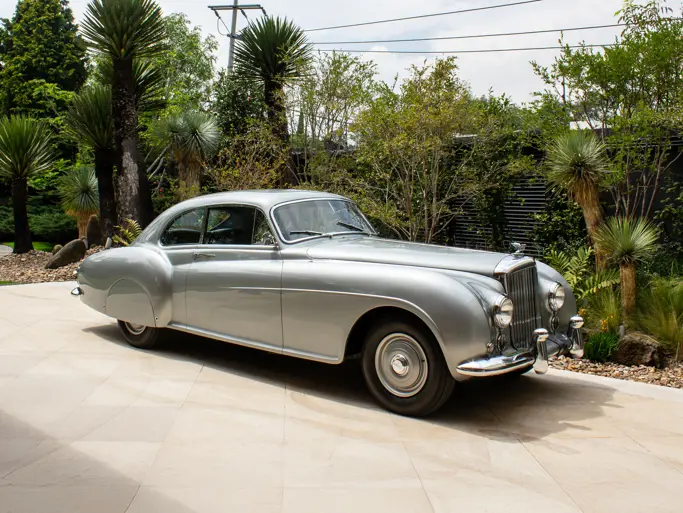155 hp 3,168 cc all-alloy overhead valve V-8, four-speed manual transmission, independent front suspension with torsion bars and live rear axle with torsion bars, four-wheel drum brakes. Wheelbase: 97.6"
- Offered from the Lyon Family Collection
- Formerly owned by “Bond Girl” Ursula Andress
- Believed to have been gifted to Andress by Elvis Presley
- One of only 253 examples built
BMW covered opposite ends of the automotive spectrum in the early ’50s. At the bottom were the R24 motorcycle and the motorcycle-engined Isetta bubble cars which put the average German citizen back on the roads with inexpensive basic transportation while creating jobs for BMW employees and income for the company. At the other end of the scale was the 501 and its successors, large and well-appointed sedans intended for the upper middle class. Introduced in 1950, the 501 was an all-new chassis, powered by the well-regarded prewar hemi-head inline two-liter six-cylinder engine from the iconic 328. Underpowered for its size, it was still well received when production finally began in late 1952.
BMW neatly solved the power problem in 1954 with a 2.6-liter V-8 engine in a sharply trimmed sedan, the 502. The V-8 was a triumph of engineering and persistence in the face of daunting adversity. The block and heads were aluminum with wet cylinder liners. Parallel overhead valves were operated from a camshaft in the block’s vee. Producing 100 horsepower at 4,800 rpm through a single two-barrel Solex carburetor, the V-8-powered 502 measured up well against competition from Mercedes-Benz and Opel. It was shortly enlarged to 3.2 liters which boosted output to 120 horsepower. The best, however, was yet to come.
At the 1955 Frankfurt show, BMW unveiled two sporty models. The first was a somewhat cumbersome sports version of the 502, the 503 with 140 horsepower from the 3.2-liter V-8 in both coupe and cabriolet form. The second offering was absolutely stunning: the 507 Roadster. Designed by Count Albrecht Goertz, an established industrial designer based in the US, with input from BMW’s US distributor Max Hoffman, the BMW 507 was, and remains today, one of the world’s landmarks in automotive design, a car that is a pleasure to behold from every aspect. With the 3.2-liter V-8 now tuned to 150 horsepower, the 507’s performance was on par with contemporary competition.
The perimeter chassis frame was constructed from large rectangular tubes with torsion bar independent front suspension and a three-point positively located live rear axle with torsion bar springs. BMW mounted the 507’s ZF four-speed gearbox near the center of the wheelbase, driven by a short driveshaft from the engine-mounted clutch and with another short driveshaft back to the rear axle. Brakes were immense Alfin drums. Solidly built and lovingly assembled by BMW’s best technicians, it was expensive, costing 26,000 new Marks and $8,988 in the US, but established the image of BMW as a sophisticated and forward-thinking manufacturer which has persisted to the present day.
Technically the 507 offered impressive specifications, but it was Albrecht Goertz’s body design that captured the imaginations of a generation of young sports car fans to whom BMW meant “motorcycles.” Goertz stressed simplicity in the 507’s design and handled the entire design project himself, integrating each and every element, from the grille to the deck-lid handle and the passengers’ cockpit in between, precisely and cleanly for maximum effect with minimum effort in close cooperation with BMW’s chief engineer, Fritz Fiedler.
One of those young sports car fans was a US Army private stationed in Germany, Elvis Presley. Elvis, who is mostly associated with large Cadillacs, harbored a lower profile affection for fast, pretty sports cars. Undoubtedly the Army’s most famous draftee, after basic training he was assigned to the Third Armored Division in Germany in late 1958 where a BMW 507 caught his eye and was famously provided for his use by BMW.
Upon his return to the United States, his entertainment career immediately resumed with even more enthusiasm than before the Army interlude. Elvis had demonstrated maturity and persistence, advancing to Sergeant during his time with the 3rd Armored. His popularity and the fascination with his years as a G.I. was such that his first endeavor after returning was a fictionalized account of his German experience, G.I. Blues, released in 1960 co-starring Juliet Prowse. More films followed including the 1963 production of Fun in Acapulco with co-star Ursula Andress.
Ursula Andress and her 507
According to information provided by BMW Group Classic, this particular 507 was built on November 30, 1958 and was delivered new to the BMW importer in New York City. The car’s file contains a copy of a California title, which confirms that this is in fact the BMW 507 owned by famed “Bond Girl” Ursula Andress.
Andress had burst on the movie scene when she stepped from the tropical waters of fictional Crab Key, during the James Bond film Dr. No, clad in a famous white bikini and a vicious-looking diving knife, thus becoming the first – and to many the most famous – of many “Bond Girls.” Andress won a Golden Globe for this performance and has enjoyed a successful career ever since. The Swiss actress co-starred with Frank Sinatra in 4 for Texas and also appeared in the satirical 007 film Casino Royale alongside Peter Sellers.
It has always been widely believed, though not documented, that this BMW 507 was given to her as a gift by Elvis. She reportedly said later on that Elvis, as he did with many friends and acquaintances, offered her one of his Cadillac convertibles. She declined twice, eventually telling him if he wanted to give her a car, a BMW 507 would be her preference.
After being acquired by Andress, it was maintained and mildly customized by George Barris during the actress’s fifteen years of ownership, including fitting a Ford 289 V-8 engine and transmission and such features as nerf bar bumpers (which remain with the car), lowered ride height and perhaps even different dash knobs. The car was eventually sold through Barris to Mark Smith, who found a correct BMW 507 engine and transmission for the car and returned it to its original stock appearance and white color, though the modified bumpers remain in place. It was acquired by Nick Harley from Smith, then sold to the Imperial Palace Collection where it remained on display until it was acquired by the Lyon family, where it has been carefully maintained in the family’s extensive collection since.
It has been carefully restored over the years and while in the Lyon Collection has been driven with some frequency. It is described as a good driving car, handling especially well since recent attention to the torsion bar suspension. Finished in white livery with red leather upholstery, it rides on a set of rare and desirable Rudge centerlock wheels.
BMW built only 253 507s in the model’s four-year production history, but they are widely and instantly recognized as milestones for their superbly integrated, subtle and refined Albrecht Goertz design, sophisticated overhead valve V-8 engine and comfortable, good-handling chassis and suspension. The design is so successful that it inspired BMW’s recent two-seater sports cars, the Z3 and particularly the magnificent V-8-powered Z8. This homage to the 507 is especially significant coming from a design-oriented organization like BMW. With a history that includes the first and most stunning of the Bond Girls, and likely even Elvis Presley, it is a unique example of a highly desirable limited-production German sports car that still inspires admiration and respect today.

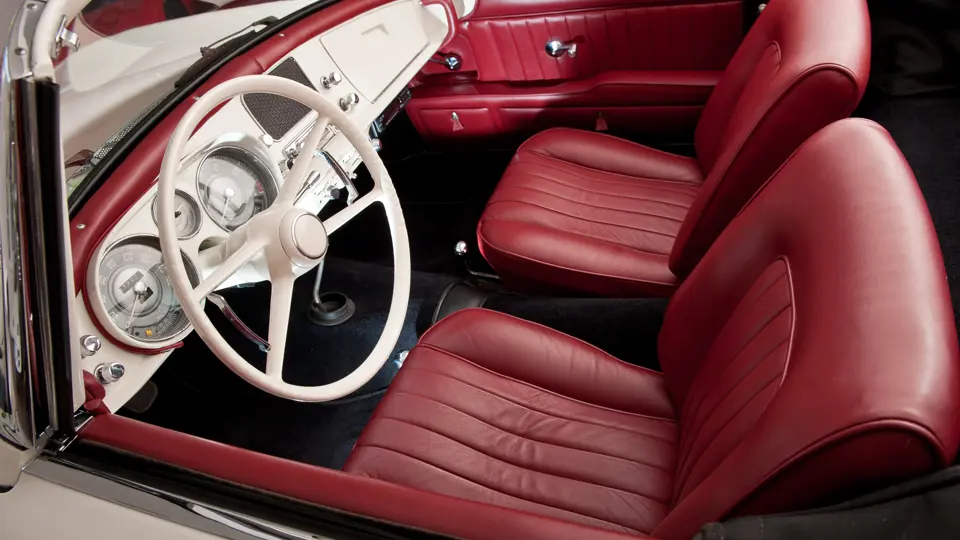



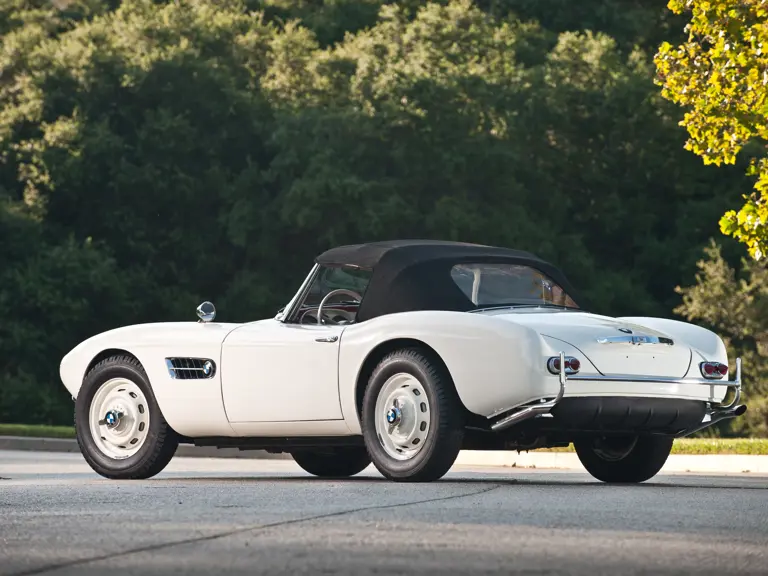
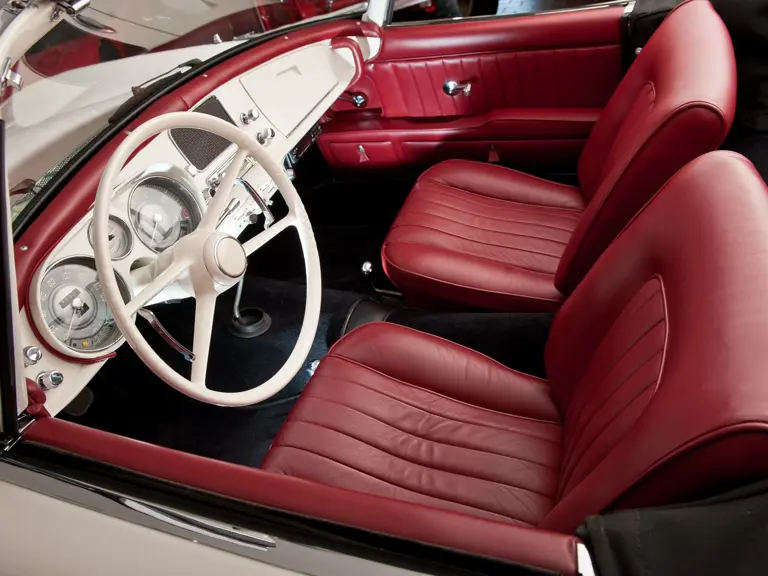
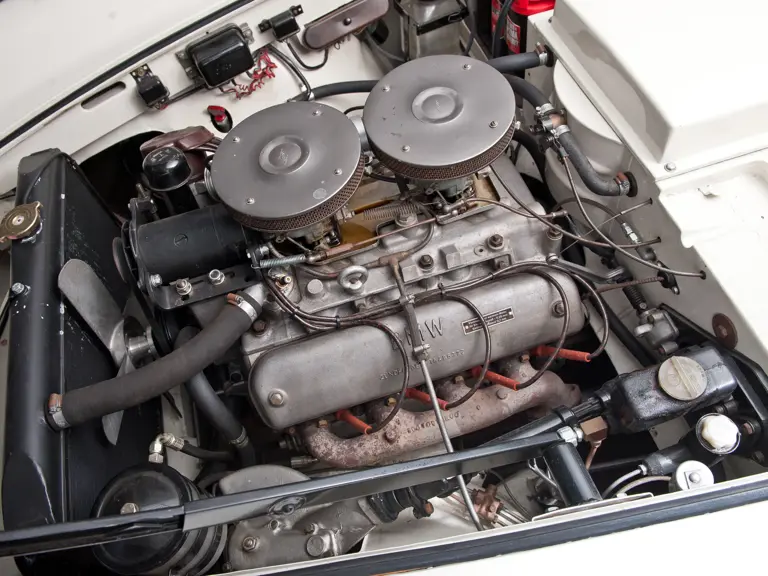
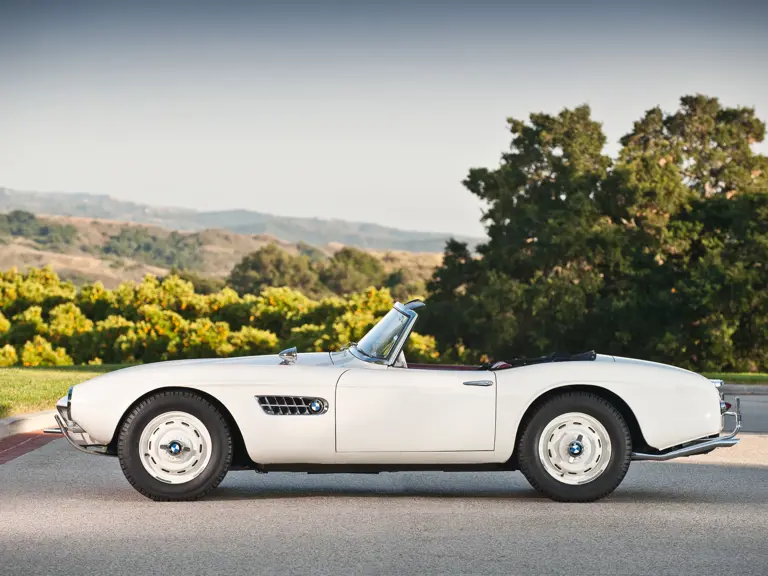
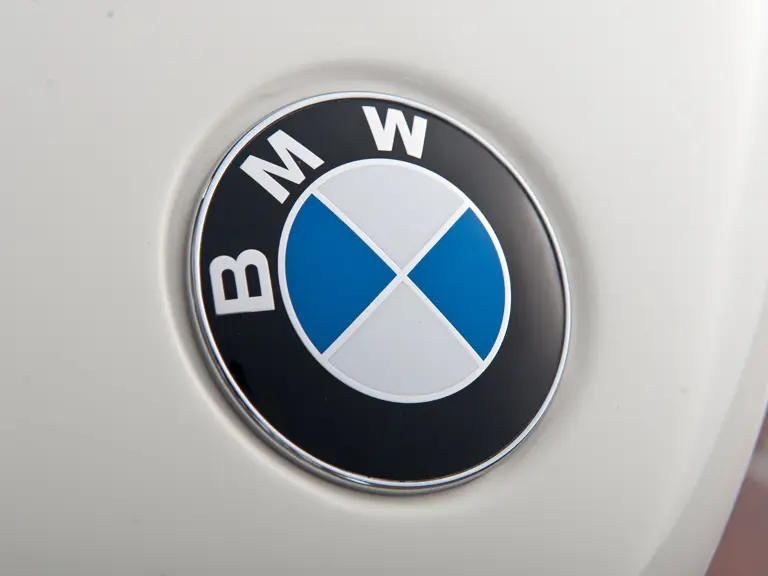
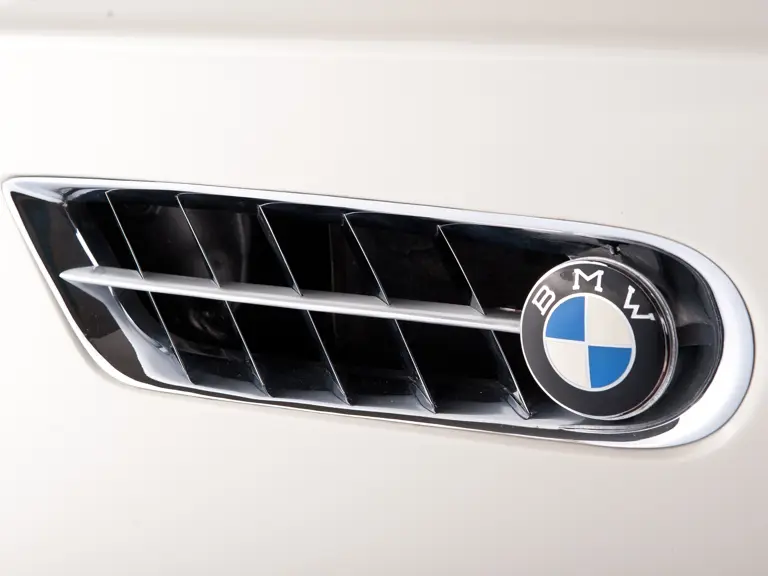
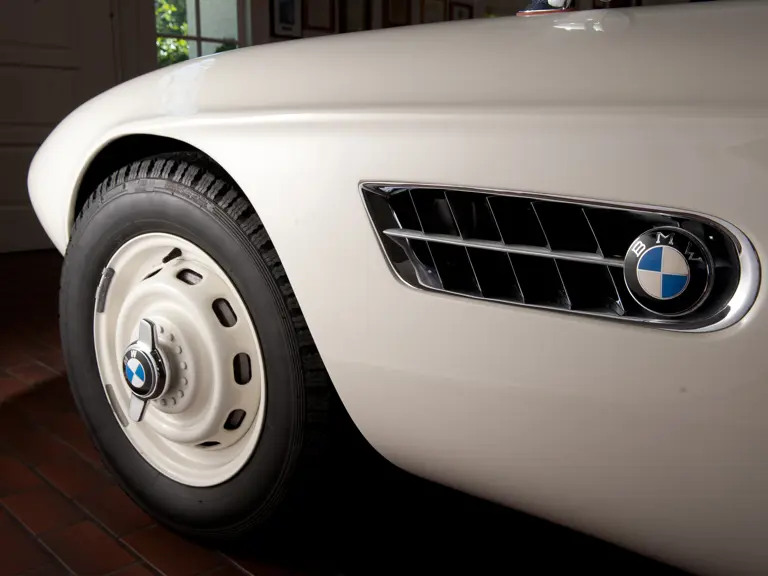
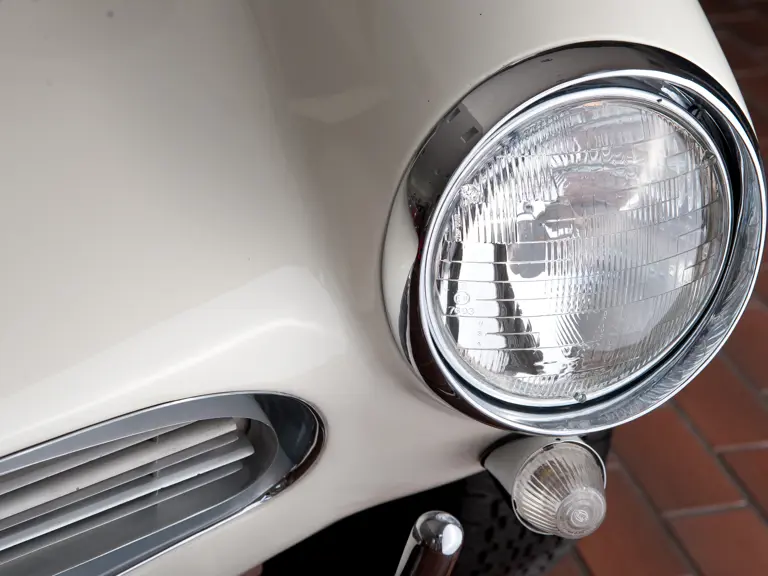
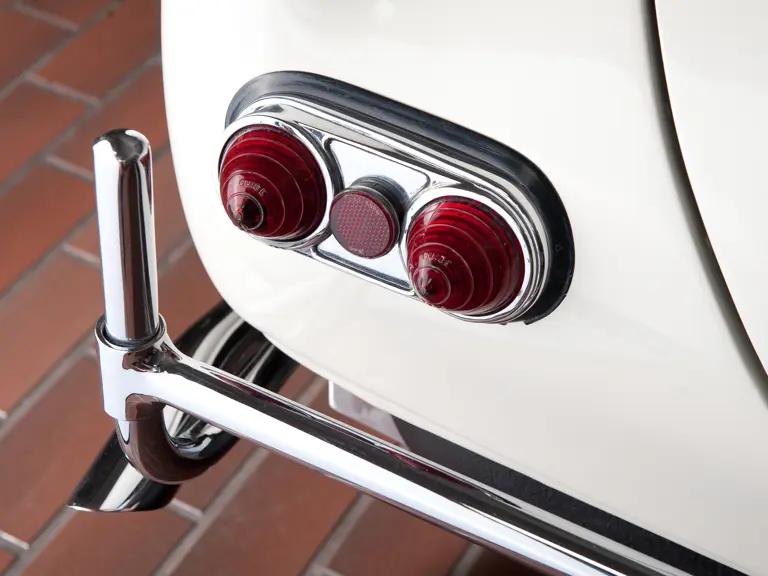
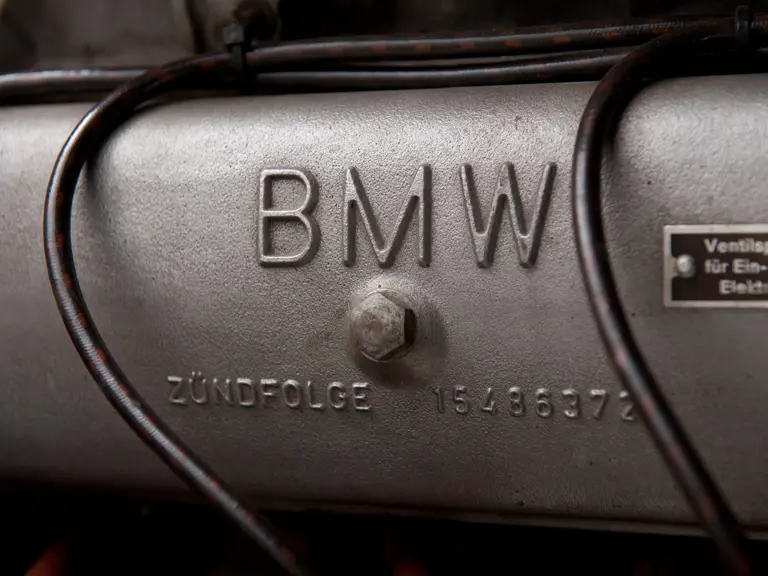
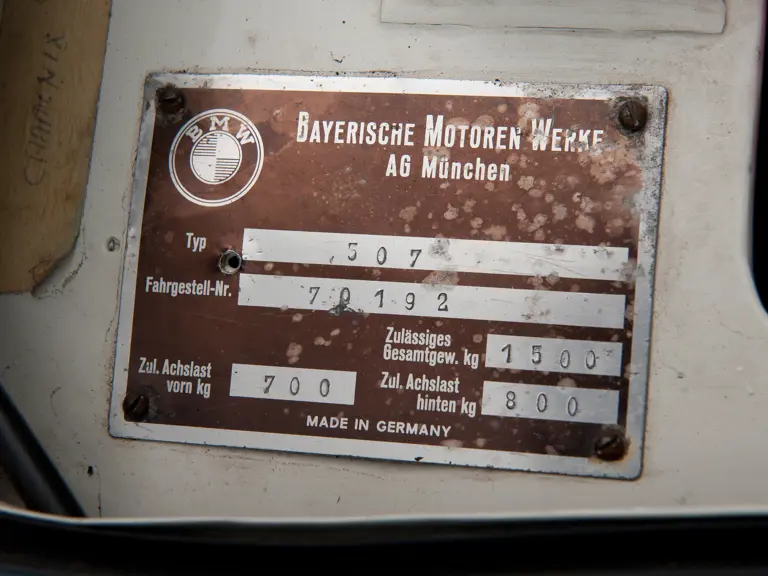
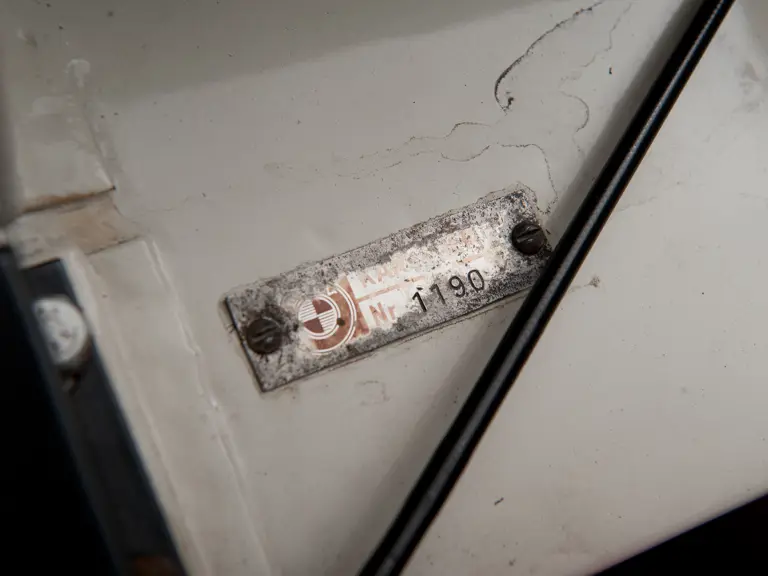
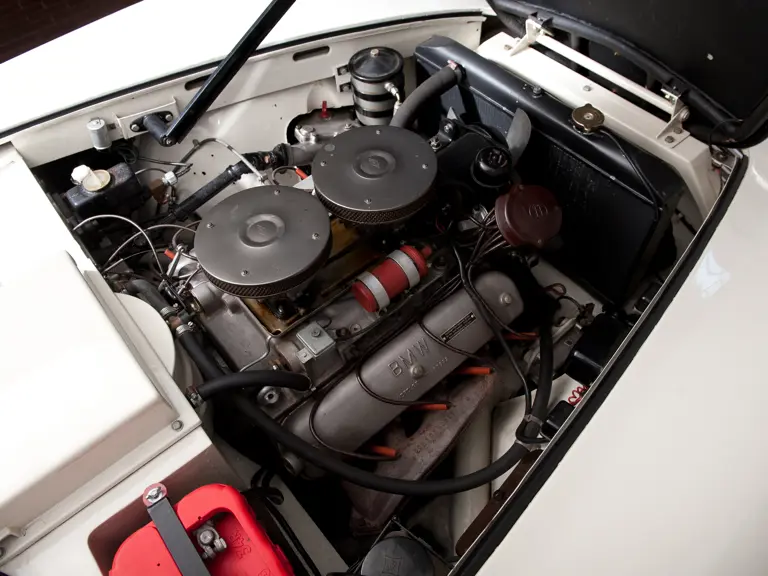

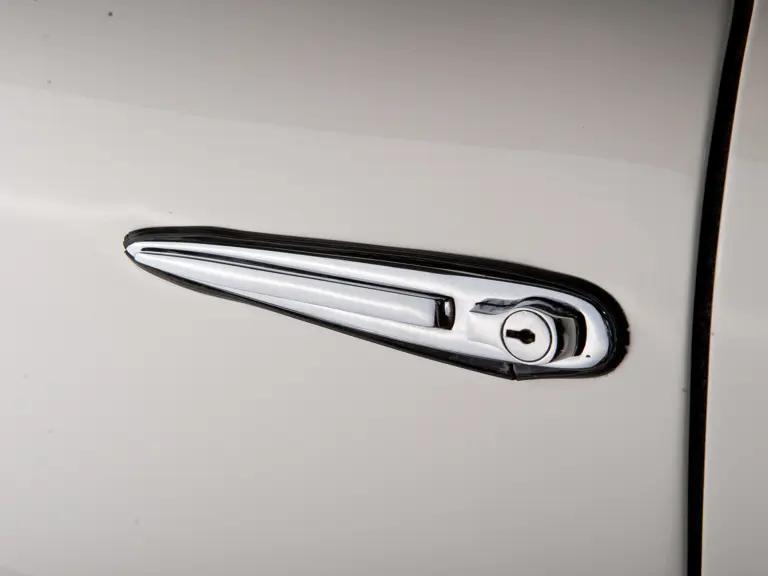

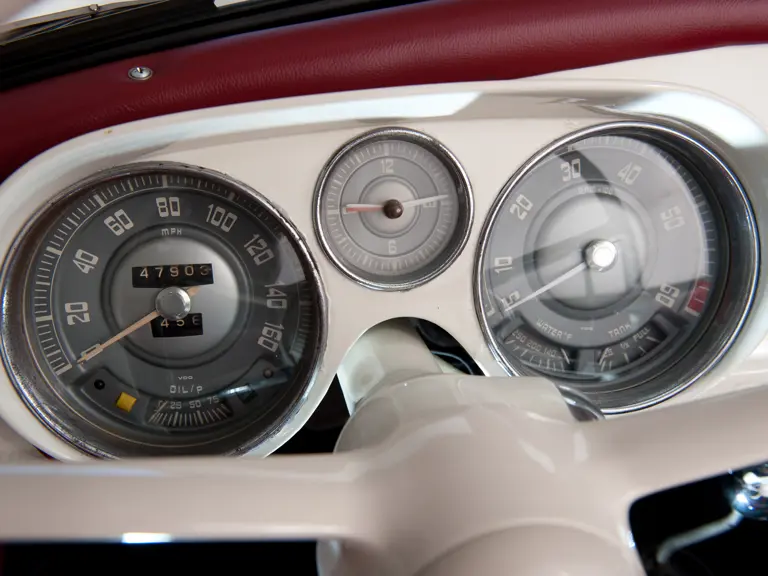
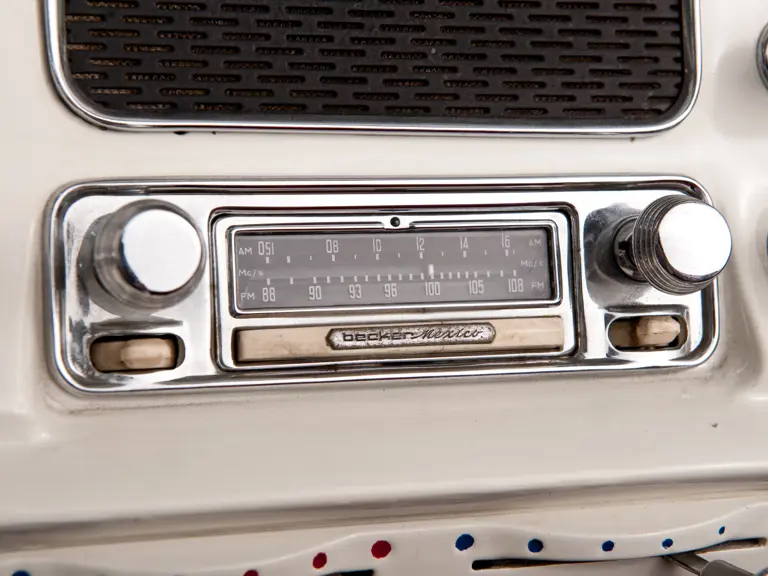

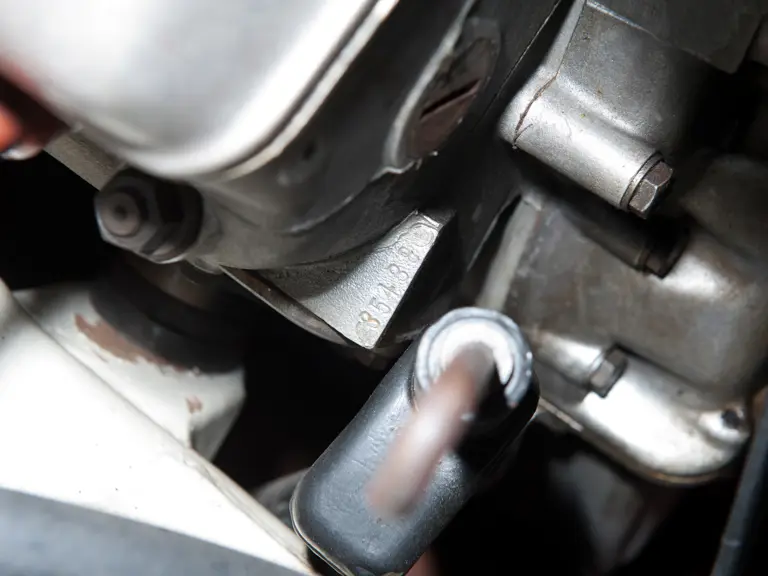
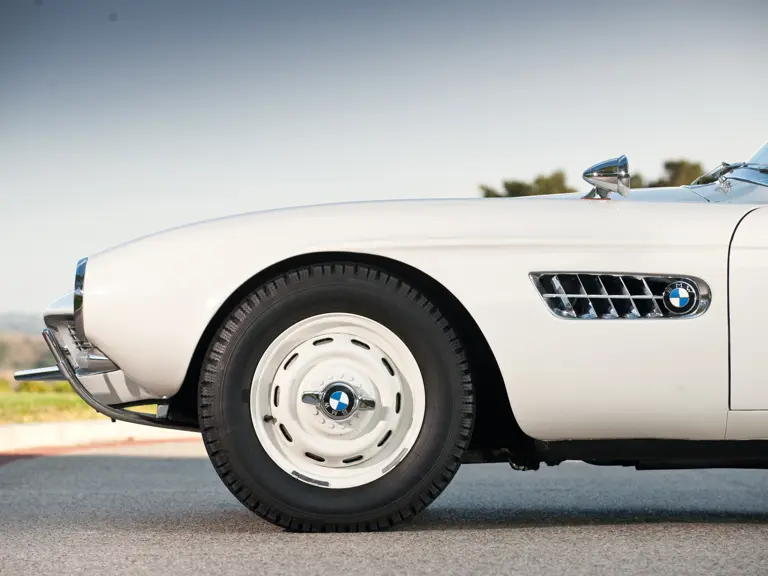
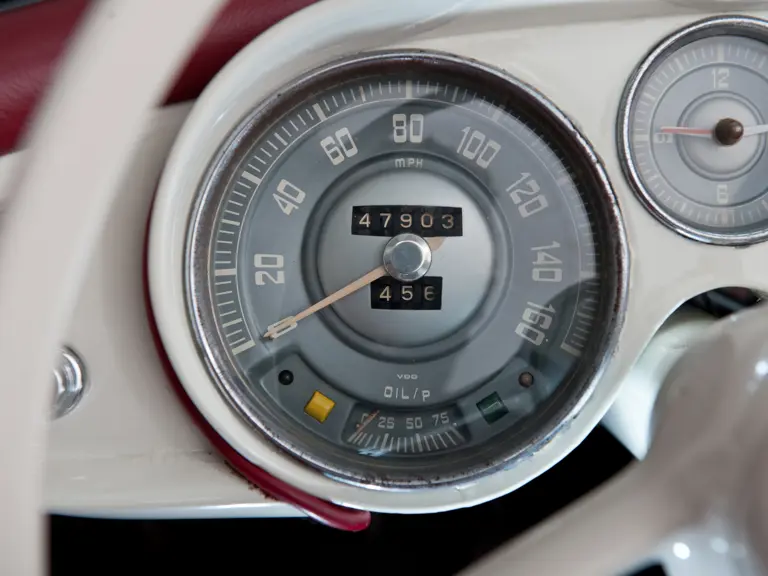
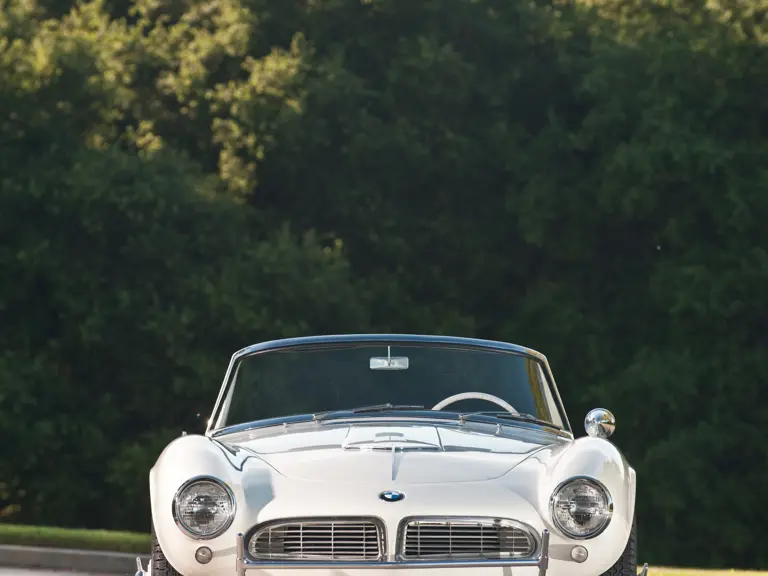

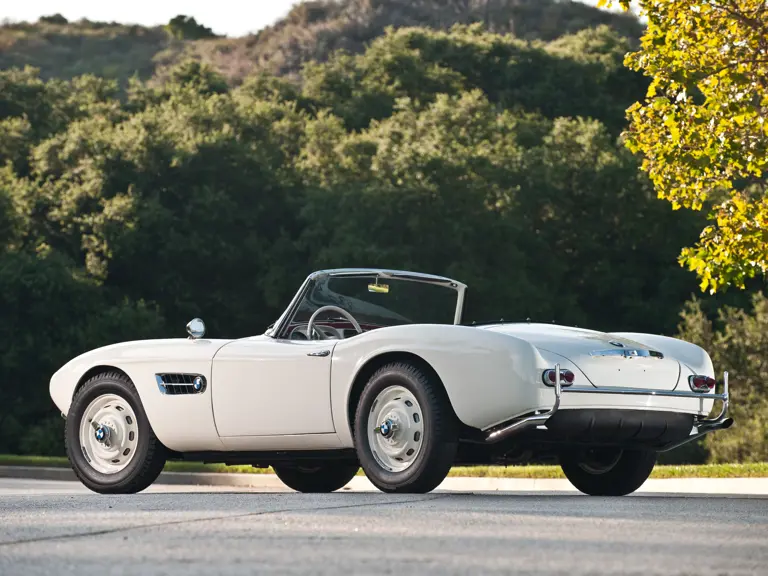
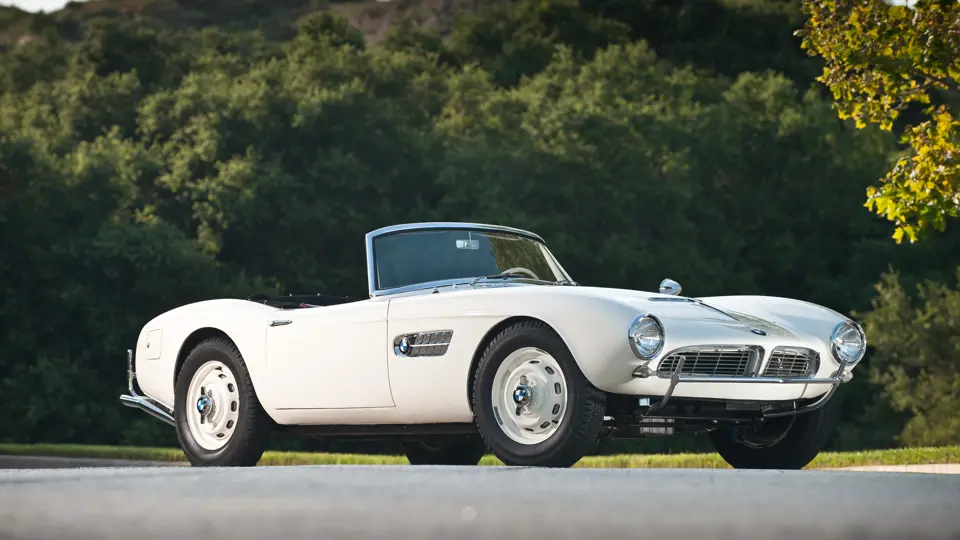
 | Monterey, California
| Monterey, California


